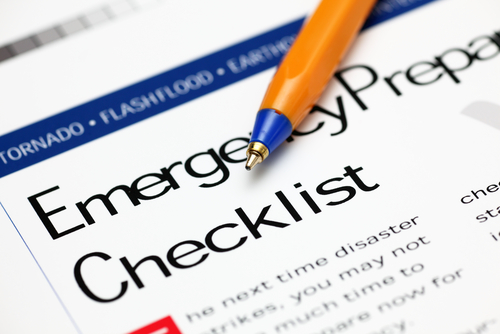The overall goal of nursing homes is to protect patients/residents and staff from environmental and man-made threats and to minimize the impact of these risks on their operations. This involves conducting a complete risk assessment to identify potential hazards and the impact they could have on the nursing home. A list of potential hazards includes, for example, hurricane and severe weather events, depending on the facility location; biological events (either natural or man-made); hazardous materials events; fire; wildfire; extended power outage; earthquake; etc. Once the risks are assessed, it is the responsibility of the nursing home to have a comprehensive emergency management plan in place that addresses the risks by focusing on four interrelated activities: mitigation, preparedness, response, and recovery.
Mitigation
Mitigation activities involve lasting reduction of exposure to – or probability of – loss from emergency events, with the key to reducing disaster losses in the long term. This includes, for instance, meeting zoning and building code requirements for rebuilding in high-hazard areas; analyses of floodplain and other hazard-related data to determine where it is safe to build in normal times; and coordinating mutual aid agreements with other nursing homes. In addition, mitigation can also involve educating staff and family members on measures they can take to reduce loss and injury, such as creating a family emergency plan. Ongoing efforts might include assessing and addressing the facility’s structural vulnerabilities or planning response activities with dialysis centers and local hospitals.
Preparedness
While mitigation is necessary to help make nursing homes safer, risk all hazard risks and vulnerabilities can never be eliminated. Nursing home facilities, therefore, must be ready to respond to threats that cannot be mitigated. A facility must be prepared to undertake certain actions to safeguard patients, employees and property. Preparedness involves establishing authorities and responsibilities for emergency actions and garnering the resources to support them. A facility must assign personnel to emergency management duties and designate equipment and other resources for carrying out assigned duties. This investment in emergency management requires upkeep and is part of preparedness. Conducting meaningful drills and exercises is critical to educating personnel, testing the plan, and putting equipment through its paces.
Response
Time-sensitive actions must occur in order to reduce the negative impact to patients and staff in the event of an emergency. Such actions will serve to also stabilize the situation so that the facility can regroup. This can include notifying emergency management personnel of the event, notifying residents and family members, evacuating or sheltering, keeping everyone informed, providing nursing services, feeding and hydrating residents as routinely as possible, and communicating with external partners and stakeholders.
Recovery
Recovery involves everything from restoring the infrastructure to getting resident life back to normal. Short-term recovery involves bringing necessary lifeline systems (e.g., power, water and sewage, transportation) up to an acceptable standard while providing for basic resident needs, security, and demonstrating that people do care and things are getting better. Once some stability is achieved, the nursing home can begin long-term recovery efforts such as restoring infrastructure and routine operations.
Of course, having a comprehensive insurance program in place is critical for nursing homes to safeguard their facility, residents, employees, and assets. Caitlin Morgan specializes in providing nursing homes with end-to-end insurance solutions to protect them in the event of property and liability losses. In addition, we also offer risk management services, including assistance in crisis and recovery programs. For more information about our nursing home insurance programs, please give us a call at 877.226.1027.


